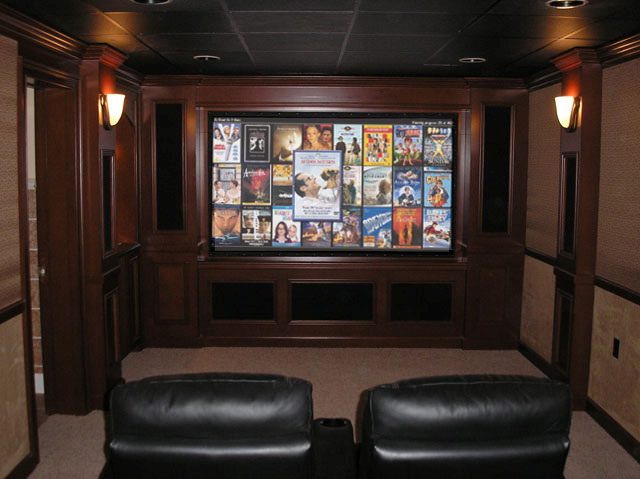Get Your Best Home Theater Receiver

Need to clarify the difference between Marantz SR7011 and SR7012? Getting your home theater equipped is a pleasant yet multidirectional task. Setting up the devices, choosing the speakers mode, creating the acoustiс. There’s a lot to do. Here some tips to make your load lighter and help choose the best AV receiver for the thrilling sound!
The AV receivers have numerous parameters including purely technical and more general ones. The latter concerns ergonomics, functionality, practical features. Let us have a brief review of the crucial factors ensuring the pure powerful sound in your home theater.
Functional features to consider in AV receivers
I’m not going to overload you with the technical details but you must look for short list with all features when looking for the AV receiver to acquire.
Surround sound modes
That’s the must-have for any home theater (that actually makes sense in the whole idea). Today, we can choose between the top-notch sound formats from Dolby, DTS, Audissey, etc. Though I can pick the spacious sound format with impressive effects, sometimes, I prefer the conservative stereo. Choose the format you need the most, but make sure you have the compatible speakers’ set and the relevant acoustic in your home theater (some formats require 11.1 mode and the special ceiling acoustic).
Ability to adjust to the location
The modern AV receivers from the medium segment have the option of adjusting the sound to the acoustic parameters of the room. You can do it manually, setting the number of speakers, desired volume for each, equalizing. The more expensive models provide the automatic tuning. However, such options can be used not at all locations. For some rooms, a special acoustic treatment of the walls and ceiling is needed.
Compression – neighbours’ trouble solution
Ability to set up compression is the magic wand allowing you to watch movies or play games without getting your neighbours’ comments about the noise. Compression cuts the high-frequency sound effects, so the sound will be muffled by the walls not penetrating further. Besides, should you fall asleep watching TV, you would not wake up during the loud ad broadcast. The compression regulation function will deal with it.
Video adjustment
Some AV receivers have the option of adjusting the video to the higher resolution formats. It can be performed with the regular TV, DVD or PC signal by means of the artificial scoping and resolution extension. That ensures the higher quality of graphics and allows seeing more details while providing less harm to your eyes. Usually, this option is provided in the more expensive models.
Integration and compatibility
The compatibility with the smartphones and tablets is the must-have option for the modern AV receivers. Needless to mention, the PC wireless connection is available by default. Some models also have the optical cables for the fast audio-and-video broadcast. You can broadcast any stream from your smartphone or a PC – music, movies, videos, etc. Pay attention to the number of the HDMI connectors the AV receiver has. The more there are the better. And the more expensive, too.
Technical parameters for dummies
In order to understand the main technical properties and numbers written on the AV receivers, you don’t have to possess a PhD title. Instead, learn the basics for three principal parameters and be ready to choose your best AV receiver.
Sound quality and distortion
The percentage of distortion shows at what volume your sound will acquire the side effects (buzzing, roar, etc.). There are two types of nonlinear distortion that can be produced by AV receivers:
- harmonious (THD) – indicated on the reliable devices. Must not exceed 1% for all frequencies;
- intermodulation (IMD) – can be omitted in the specification. Must not exceed 3%.
In many modern devices, the intermodulation distortion misses from the product specification. However, you can define it by yourself. Just bring some audio with you to the shop and compare its sound in different receivers. Start listening from the lowest volume, then gradually add the volume until you hear the distortion. The higher is the distortion limit, the better the receiver is.
Volume and power
Do not aim for the highest volume and power in all cases. For the small rooms and the TV watching with two speakers, even the low parameters will be fine. Yet, the more devices your home theater features, the more powerful receiver you will need. The professionals recommend selecting the AV receiver with the power higher than the speakers you already have, in order to have a reserve. Should you like to replace some of them, you won’t have to buy a new, more powerful receiver.
Having a powerful receiver will provide the minimal distortion and the utmost quality of your sound. Still, the sensitivity of the acoustic system matters as well. Generally, the specialists advise having at least 50 Watt receiver for a room of 30 m2 and the acoustic sensitivity about 90 db.
How many speakers / channels?
The reply is individual. It depends on the content you are planning to listen / watch, its recording format, the number of speakers you already have or plan.
There are four types of acoustic sets with regard to the channels:
5.1 – the basic system, able to produce a high-quality sound for 5-tracks recording format. Recently, this format was very popular, however, today, it is slowly subsided by the next generation format.
7.1 – this format foresees the 7-tracks recording system. This format is used in the new Blu-Ray discs for movies. Besides, seven speakers better convey the effect of the surround sound.
9.1 and 11.1 – these sets for the sound amplification can be used for different recording formats. Meanwhile, they require the additional ceiling-based acoustic devices (speakers).







